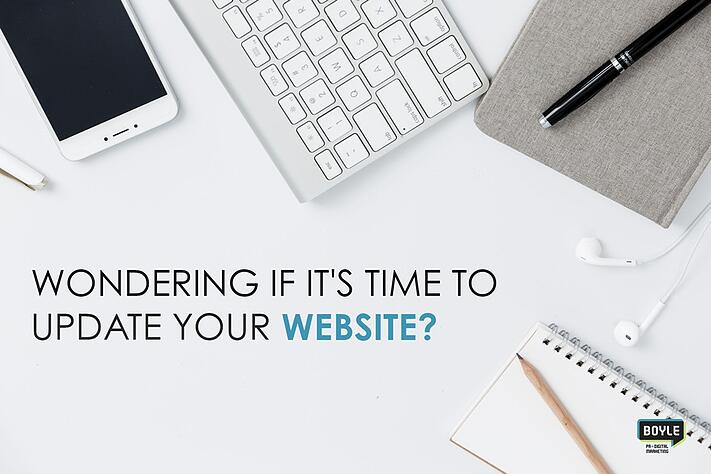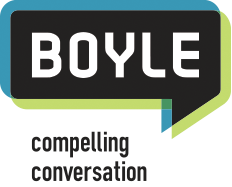Signs It’s Time to Update Your Association’s Website
Does your association’s website resemble an old house to which many rooms and closets have been added and others are collecting dust? Does it scream to your members “We don’t care if it’s easy or a pleasure to visit?” Does the site never come up in searches of information you host? Is it difficult to update so it’s underutilized by the rest of the staff? Are you taking way too many phone calls from members for information that could easily be on the web?
These are sure telltale signs that it’s time to update your association’s website to make it one of your members’ top benefits.

We know a website redesign might seem overwhelming and budget might be an issue, but if you need help convincing your president and board that they need to bite the bullet, this list may help:
- Your website isn’t mobile-friendly
Considering that 74% people say they are likely to return to a website if it’s mobile-friendly, an unresponsive website is losing a large chunk of traffic. And you’re probably discouraging and frustrating many of your members who are forced to expand their screens with their fingers in order to read your content. You can find out how many visitors to your website are accessing it from their mobile devices by checking your Google Analytics. (And speaking of Google, your site is actually punished in terms of keyword rankings if it is not responsive.)
- Page load is too slow
40% of people will abandon a website if it takes more than three seconds to load, says a study by Kissmetrics. Google PageSpeed Insight Pingdom can measure your website’s speed and identify the elements responsible. A website redesign can then fix these problem elements. Redesigning for better speed will also improve your site’s ranking as Google considers page speed a factor in how it ranks search results
- Your website is not secure
If your website does not have SSL certification, it is termed as “non-secure” by Google. Such sites are more susceptible to hacking. Their user data can be accessed and compromised by third parties during data transfer over HTTP. From January 2017, Google has started identifying “non-secure” sites in Chrome and plans to mark all unencrypted sites with a red triangle in the address bar, to warn visitors.

To avoid Google penalties, your website should be completely encrypted and have HTTPS in the address.
- The website looks dated and is not user-friendly
If you haven’t changed your website’s design in a long time, it probably looks outdated to a typical user who browses many websites daily. Considering that nearly half of all consumers (or 46.1%) in a Stanford University study assessed the credibility of sites partly on the appeal of their overall visual design, an outdated website may not encourage visitors to return or to engage as you’d like. This interesting study by Google found that websites with low visual complexity and high prototypicality (how representative a design looks for a certain category of websites) were perceived as most appealing to users.
And, if you find your members frequently request info that’s available on the website, that’s a good sign that it’s cluttered and difficult to navigate. Today’s more intuitive architectures make it far easier for users to find content efficiently. User experience (UX) experts can help create layouts that guide specific types of users (members, prospects, committee members, job seekers, media, regulators, etc.) to the information they’re seeking or that you want them to discover. The result will be a better performing website that generates leads, convinces skeptics, mobilizes advocates, educates members, builds attendance, and more.
Is your association spending a lot of time emailing information that can easily be conveyed on your public-facing or password-protected website? Are your members’ latest achievements and efforts hidden or missing from the site? The content audit done during the redesign process will identify low and high traffic-generating content, so you can feature, highlight and optimize the information, news, events, programs, content offerings, etc. your visitors are actually seeking (and archive the rest).
A note about search engine optimization: This is an enormous and complicated task that is far easier when done as the site is being redesigned. Any currently high-ranking pages can be redirected, so they won’t lose their traffic. Google loves fresh content and updated websites. Just be sure you use only a full-time SEO expert for this job because best practices change constantly.
Also, if your website is old, it probably has lots of broken hyperlinks that frustrate users, garner Google penalties, and reflect poorly on the efficiency and competency of your association. Tools like BrokenLinkCheckerW3C’s LinkChecker can be used to detect broken links in your current website so they will not be carried over to the new one.
- Your website is unsocial
If your website lacks integration with social platforms where your members are active, it’s time to invest in a redesign. New visitors will appreciate it if they can access your website using their existing social media IDs, without having to fill out a separate sign-up or login form. In return, your association gets verified data about prospects from their social accounts that can be used for creating targeted marketing campaigns and gathering leads.
Bringing it all Together
Investing in a website redesign can yield great returns to your association as well as your website visitors. Updated websites perform better on search engines; provide a better experience to users; convert more visitors into members, buyers, attendees and activists; and increase your association’s online visibility and credibility.
And the great news is a website redesign doesn’t have to be an overwhelming, budget-monopolizing project that takes 9-12 months to complete then rapidly becomes outdated again. Our Growth Driven Design methodology can transform your website into a high-performing marketing, membership and advocacy tool, quickly and dynamically, through agile development, analytics and stakeholder feedback. To learn how this approach can make your website redesign a far more enjoyable and economic process (and more acceptable to your boss, staff counterparts and board), contact Kellie at kellie@boylepublicaffairs.com
